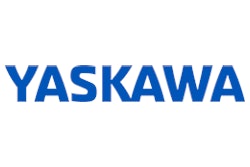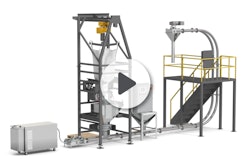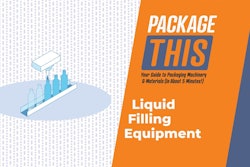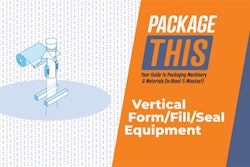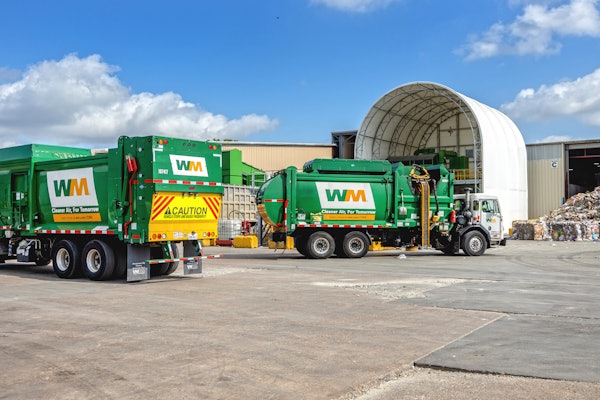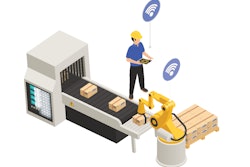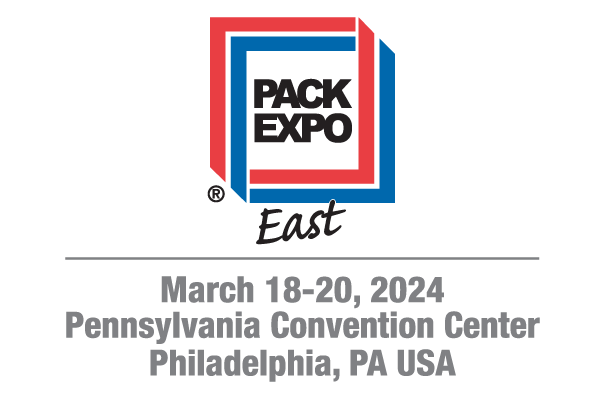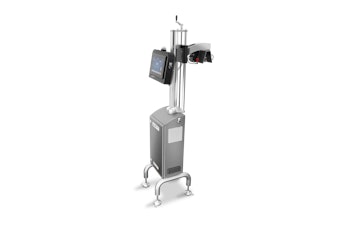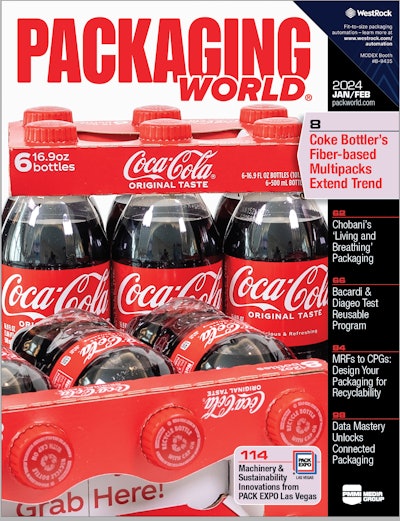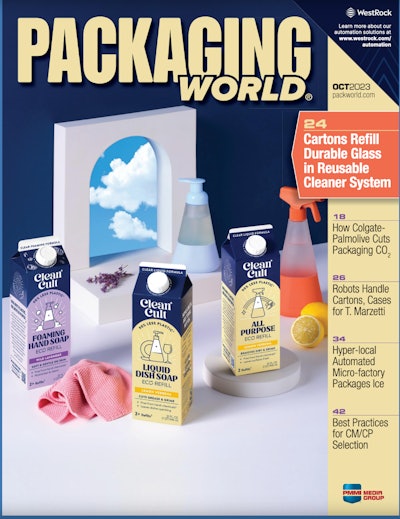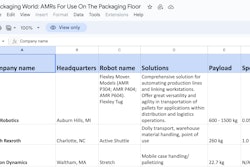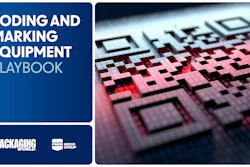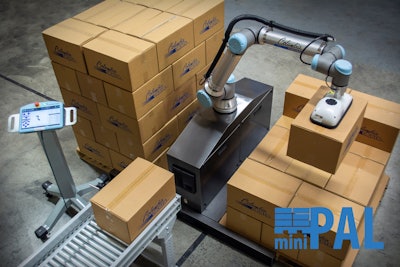
One category of robots that continues to gain traction and generate enthusiasm is collaborative robots, or cobots. Compact, movable, and affordable, these robots are suitable for all size operations and can lower the cost of a workstation on lines with shorter runs or unusual package configurations. Because of this, they are predicted to see some of the most significant growth  The M version of Sidel’s cobotic palletizing CoboAccess_Pal line features a Yaskawa cobot, the HC20, with a 14-kg payload and a ‘very significant’ reach of 1,700 mm.
The M version of Sidel’s cobotic palletizing CoboAccess_Pal line features a Yaskawa cobot, the HC20, with a 14-kg payload and a ‘very significant’ reach of 1,700 mm.
In fall of 2019, a strategic alliance saw the combination of Columbia/Okura LLC’s palletizing technology with a Universal Robots cobot to develop the miniPAL™, a mobile palletizing cobot integrating Universal Robot’s UR10e. The cobot has a maximum payload of 10 kg and a 1,300-mm reach.
Says Columbia/Okura President Brian Hutton, “The partnership between our two companies allows Columbia/Okura to provide a safe and economical palletizing solution to clients who are facing labor shortages, many of whom may also be new to factory automation.”
 New from Yaskawa is what it says is the industry’s first IP67-rated cobot, the HC20XP six-axis robot, which is equipped for continuous use in damp or splash-proof environments
New from Yaskawa is what it says is the industry’s first IP67-rated cobot, the HC20XP six-axis robot, which is equipped for continuous use in damp or splash-proof environments
Another new system is the M version of Sidel’s cobotic palletizing CoboAccess™_Pal line. The palletizer features a Yaskawa cobot, the HC20, with a 14-kg payload and a “very significant” reach of 1,700 mm, says Sidel, “thus addressing the two most sought-after factors for palletizing.”
The cobot can build pallets up to 1,900 mm at speeds to six cycles/min. Says Florian Marlot, Product Manager for the CoboAccess_Pal platform at Sidel, “Cobotics is an increasingly crucial asset in end-of-line operations. It reduces end-of-line production costs, while improving the operators’ working conditions, freeing them from very strenuous manual palletizing tasks.”
New from Yaskawa is what it says is the industry’s first IP67-rated cobot, the HC20XP six-axis robot, which is equipped for continuous use in damp or splash-proof environments. Made of cast aluminum for durability, the model features an easy-to-clean surface, allowing it to be used in sanitary environments, where wipe or wash is required. NSF H1 food-grade grease is included as standard, in case of incidental food contact.
The HC20XP has a 20-kg payload and a 1,700-mm maximum reach, making it suitable for a range of material handling, machine tending, or assembly tasks. The cobot’s range also enables it to reach full 80-in. pallets without requiring an elevator or lift mechanism.
 The 10 kg-payload Fanuc cobot, Fanuc CRX-10iA cobot is mounted on a lightweight, mobile structure that can move the robot around a work cell.
The 10 kg-payload Fanuc cobot, Fanuc CRX-10iA cobot is mounted on a lightweight, mobile structure that can move the robot around a work cell.
For all robots, including cobots, the correct end-of-arm tooling is essential for a successful application. Recently Piab vacuum-operated EOAT, the piCOBOT®, was enhanced to be configurable with any cobot. The end effector is now available with a generic electrical interface as well as in several options for mechanical mounting plate dimensions, in accordance with the ISO 9409-1 standard. The piCOBOT EOAT, which, with gripper weighs just 1.59 lb and can lift objects weighing up to 15.4 lb, comprises a vacuum pump unit and a gripper unit fitted with suction cups.
 Piab’s piCOBOT EOAT was enhanced to be configurable with any cobot.
Piab’s piCOBOT EOAT was enhanced to be configurable with any cobot.
Read Packaging World's full 2020 Robotics Special Report:
Robots Drive the Manufacturing Revolution
Download the Playbook
For more information on trends in robotics, download Packaging World’s new Packaging Robotics Playbook, 2020 Edition.

















